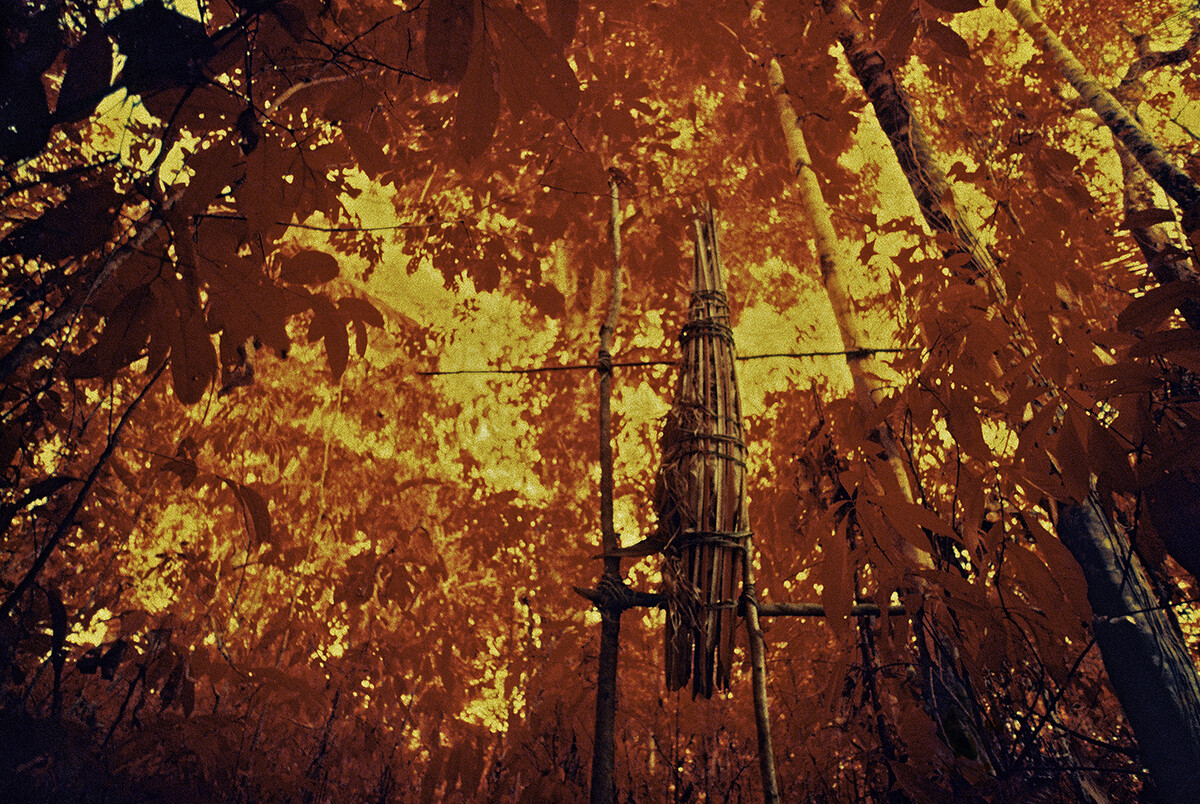(When I die I will take nothing, those who owe me I will charge in hell)
April 6–June 17, 2017
Associação Cultural Videobrasil and SP-Arte present Nada levarei quando morrer, aqueles que me devem cobrarei no inferno (When I die I will take nothing, those who owe me I will charge in hell). Curated by Solange O. Farkas and Gabriel Bogossian, the show is the first exhibition of the SP-Arte at Galpão VB project and features works by Caetano Dias, Claudia Andujar, Miguel Rio Branco, Gisela Motta and Leandro Lima, Rodrigo Bueno, Rodrigo Braga, Runo Lagomarsino, and Virginia de Medeiros.
In 1964, Pier Paolo Pasolini released The Gospel According to St. Matthew in Italy. The film, which was dedicated to the memory of Pope John XXIII, is the first radical articulation of a set of issues that thereafter became present in Pasolini’s film, literature and essay productions in various ways. The idea of a transnational third world, which started in the outskirts of Rome, included Southern Italy, and extended to the actual third world countries enabled the approximation of the landscapes and the marked faces of Italy’s Southern workers—actors and setting of the film—and the African American spirituals that make up the soundtrack. The sacred tone of the revolt of Pasolini’s Christ is more than a tribute to Italy’s popular Catholicism; it was a subtle provocation, since it presented a message, which was combative, stern, as well as extremely faithful to the text of the Gospel, addressed to the detainers of power.
That same incisive message, which promotes tension between what’s sublime and what’s profane in order to affirm the power of dissident ways of living, is the starting point for the exhibition Nada levarei quando morrer, aqueles que me devem cobrarei no inferno. As in Pasolini’s film, it praises unknown faces marked by the testimony of another time, as well as nostalgia for a lost and old place; it also contains eroticism, irony and grace, stating a sometimes violent desire for life that is present in the title—named after a Miguel Rio Branco video, which is included in the exhibition—as well as in the works gathered here. They are echoes of lives with no fame or story that reemerge amidst imposing urban renovations, large infrastructure projects, as well as other symptoms of order and progress—debris at the angel’s feet—to once more affirm its force and its difference.
The exhibition will also hold a series of activities to expand on the questions raised by the curators. Documentaries produced by Thomaz Farkas, a guided tour of the exhibition and the Vila Leopoldina neighborhood with the artist Rodrigo Bueno and a talk with the architect and urbanist Paulo Tavares make up the three public programs, all free of charge. On April 6 at 7pm, the exhibition opens at Galpão VB, and will be held through June 17, 2017.
exhibition Nada levarei quando morrer, aqueles que me devem cobrarei no inferno
with works by Caetano Dias, Claudia Andujar, Miguel Rio Branco, Gisela Motta and Leandro Lima, Rodrigo Bueno, Rodrigo Braga, Runo Lagomarsino, and Virginia de Medeiros
curated by Solange O. Farkas and Gabriel Bogossian



